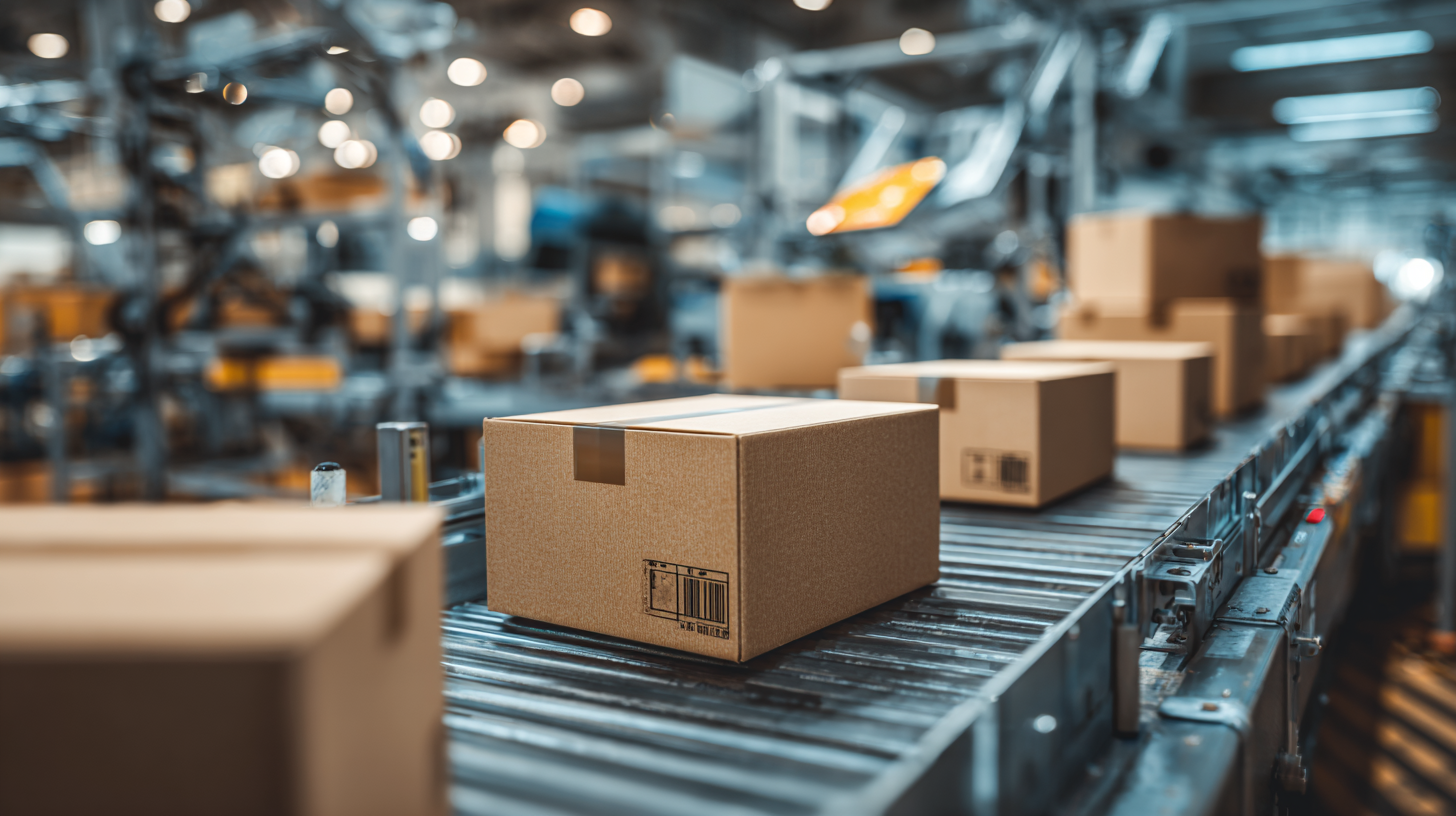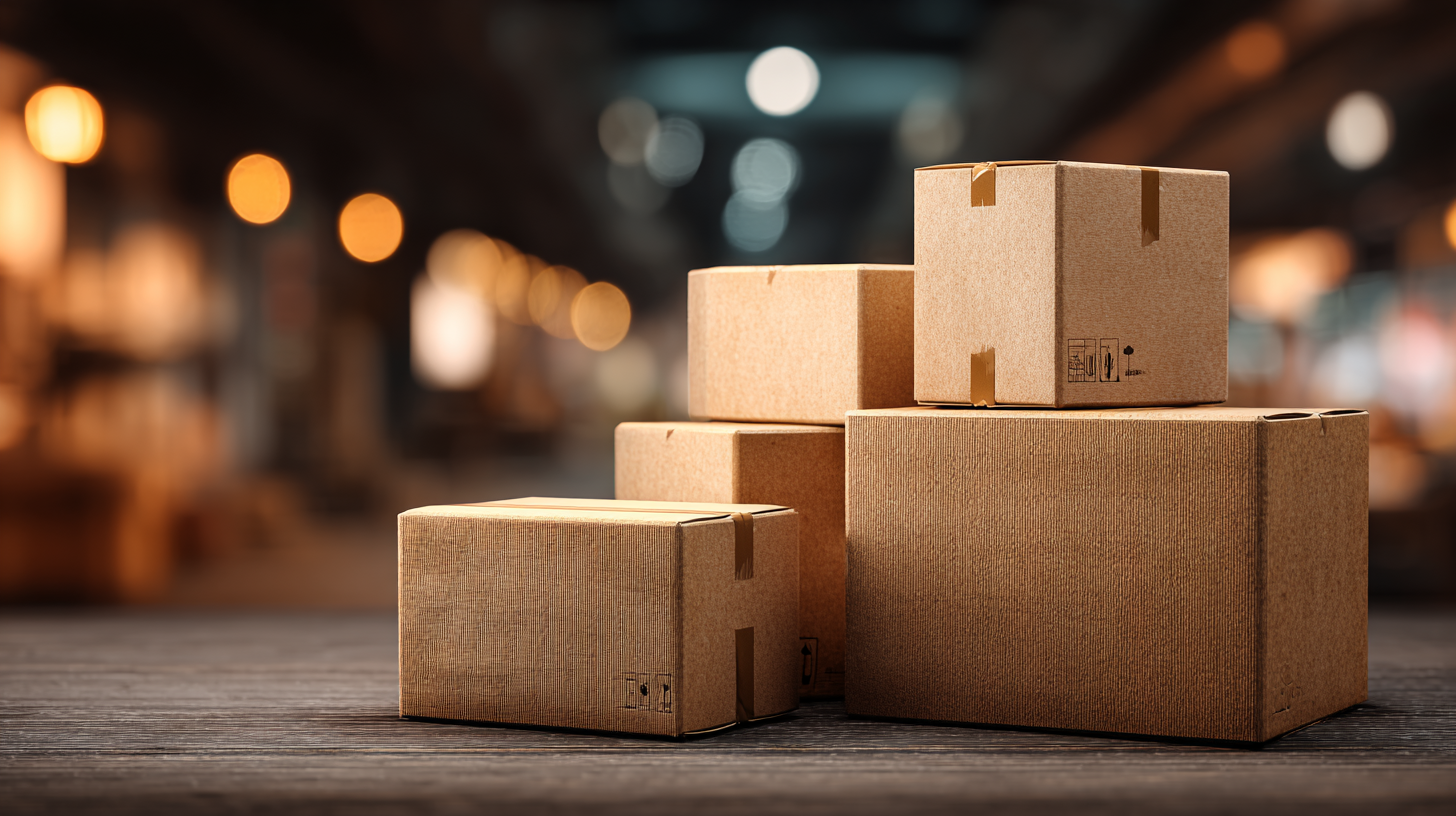In the rapidly evolving world of packaging, the demand for innovative "Boxes For Packaging" is expected to surge significantly by 2025. According to a recent report by Smithers Pira, the global packaging market is projected to reach $1 trillion by 2024, with sustainable and smart packaging solutions taking center stage. Industries are increasingly focusing on eco-friendly materials, as 72% of consumers prefer brands that utilize sustainable packaging. Furthermore, the integration of technology in packaging design, such as augmented reality and IoT capabilities, is set to revolutionize user experience and functionality.

As businesses strive to meet consumer preferences and regulatory requirements, the evolution of packaging will not only enhance product safety and shelf life but also contribute to brand identity and customer engagement. By exploring the potential innovations shaping the future of packaging, we can prepare for the next wave of practical and aesthetically appealing "Boxes For Packaging."
The sustainable packaging market is poised for significant growth through 2025, driven by the increasing demand for eco-friendly materials. By 2024, the value of the sustainable recycled fiber market is projected to reach $7.209 billion, with expectations to grow to $7.656 billion in 2025 and an impressive $12.444 billion by 2033. This surge is largely attributed to the heightened consumer preference for environmentally friendly packaging solutions across various industries.
In the realm of food packaging, the global market is set to expand, with the frozen food packaging market expected to increase from $11.95 billion in 2025 to $17.2 billion by 2032. The paper cup market is also on a similar trajectory, with growth expected from $11.35 billion in 2025 to $13.49 billion by 2032, reflecting a compound annual growth rate of 3.86%. These trends highlight the shifting landscape towards more sustainable options, as companies increasingly seek to minimize their environmental footprint.
Furthermore, the integration of artificial intelligence (AI) in recycling processes is emerging as a critical innovation in sustainability. AI-powered recycling facilities are utilizing advanced machine learning to enhance the sorting and recycling of packaging materials, enabling a more efficient and effective recycling process. This technological advancement, alongside the growing adoption of recyclable materials and optimized packaging solutions, signifies a transformative change in the packaging industry as it moves towards a more sustainable future.
The packaging industry
is on the brink of a transformative era as technological advancements redefine design and functionality.
By 2025, we can expect to see the emergence of
smart packaging solutions that incorporate
Internet of Things (IoT) technology. These innovations will allow packaging to interact with consumers,
providing real-time information on freshness, inventory levels, and environmental impact.
For instance, sensors embedded in the packaging could detect temperature variations and notify the consumer if the product is no longer safe for consumption,
thus enhancing the overall user experience and safety.
Moreover, advancements in sustainable materials are likely to play a crucial role in packaging innovations.
Biodegradable materials and plant-based composites are gaining traction as companies prioritize eco-friendly options.
These materials not only reduce waste but also appeal to a growing demographic of environmentally conscious consumers.
The integration of 3D printing technology will enable brands to create customized packaging solutions on-demand, optimizing both functionality and aesthetic appeal while minimizing excess production.
As we approach 2025, these key technological developments are set to revolutionize the packaging landscape,
making it more intelligent, sustainable, and responsive to consumer needs.
In the quest for standout packaging, innovative printing techniques are revolutionizing box branding and customization, setting a new standard for the industry. Advances in digital printing technology are allowing brands to produce vibrant, high-resolution designs that were previously unattainable with traditional methods. This not only enhances the visual appeal of packaging but also offers greater flexibility for small batch production and on-demand printing. Brands can easily update designs, experiment with seasonal themes, or create limited editions without the financial burden of large print runs.
Moreover, new techniques such as augmented reality (AR) printing are increasing interactivity in packaging. Consumers can scan QR codes or AR markers on boxes to unlock digital experiences, providing an engaging way to communicate the brand's story or convey product information. This blend of physical and digital environments enriches the consumer experience and fosters a stronger connection between the customer and the brand. As these innovative printing techniques continue to evolve, they will undoubtedly shape the future of packaging, allowing for unprecedented personalization and creativity in the marketplace.
The packaging industry is undergoing a significant transformation as brands increasingly recognize the importance of consumer-centric features in enhancing user experiences. According to a recent report from Smithers Pira, the global smart packaging market is projected to reach $41.5 billion by 2025, driven primarily by innovations that focus on consumer engagement. This shift emphasizes the need for packaging solutions that not only protect the product but also resonate with consumers on a personal level.
Innovative designs that incorporate interactive elements, such as QR codes and augmented reality, allow consumers to connect more deeply with brands. Research from the Packaging Association indicates that over 70% of consumers are more likely to purchase a product with interactive packaging, highlighting the effectiveness of these features. Additionally, sustainable packaging options are becoming a priority; a Nielsen study found that 73% of consumers are willing to change their consumption habits to reduce environmental impact. As we move toward 2025, packaging innovations will undoubtedly continue to evolve, aligning with consumer preferences for convenience, sustainability, and interactive experiences.

As we look towards 2025, smart packaging technologies are set to revolutionize the way products are packaged and consumed. According to a recent report by Smithers Pira, the global smart packaging market is expected to grow at a CAGR of over 7% annually, reaching $40 billion by 2025. This trend reflects a growing demand for packaging that not only protects the product but also enhances its functionality and provides valuable information to consumers.
Implementing smart packaging technologies involves integrating innovative materials and digital tools that can communicate with consumers, track supply chains, and improve overall user experience. For instance, QR codes and NFC technology can allow consumers to access detailed information about product sourcing and usage, increasing transparency and promoting sustainability. Brands adopting these technologies not only improve customer engagement but also gain insights into consumer behavior and product performance.
Tips for incorporating smart packaging into your products include assessing the specific needs of your target audience, selecting the right technology that aligns with your brand values, and ensuring that the use of these technologies enhances the user experience without adding excessive complexity. Collaborating with technology providers can help create customized solutions that effectively integrate with your existing packaging processes. Additionally, staying informed about advancements in smart packaging will be crucial for maintaining a competitive edge in the rapidly evolving market.

